Smart and agile, the impala is a graceful African antelope that stays vigilant at all times.

Impala
Aepyceros melampus
Impala Scientific Classification
- Kingdom: Animalia
- Phylum: Chordata
- Class: Mammalia
- Order: Artiodactyla
- Family: Bovidae
- Genus: Aepyceros
- Species: Aepyceros melampus
Impala Appearance
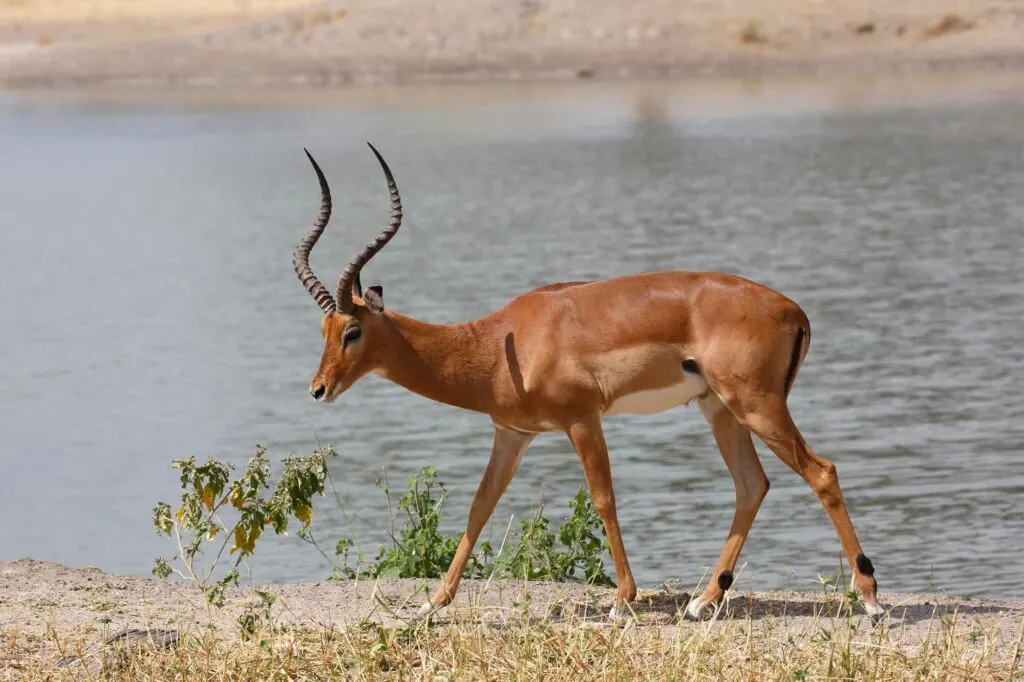
- Lifespan: 12-15 years
- Length: 51 inches
- Height: 28-36 inches
- Weight: 88-168 pounds
- Top speed: 56 mph – among the fastest land animals
Males are known as rams, while females are referred to as ewes and have no horns.
The common impala is a medium-sized antelope, and its name is derived from the Tswana word Phala, which means ‘red antelope.’ Its name in Afrikaans ‘Rooibok’ is also used to substitute Impala in English.
Impalas have a glossy, shiny reddish-brown coat, which features two-tone coloration. The impalas have a peculiar reddish-brown back, and tan flanks, a white underbelly, and a vertical black stripe appear on the back of each thigh.
They weigh anything between 88 to 168 pounds, reach a head-and-body length around 51 inches, and height of about 28-36 inches at the shoulders. Only the males grow slender horns, ranging between 18 to 36 inches long.
There is another species of impala, the black-faced impala, which is restricted to northwestern Namibia and southwestern Angola.
Did you know? They are fleet runners who can leap up to 33 feet in length and 10 feet in height.
Impala Range & Habitat
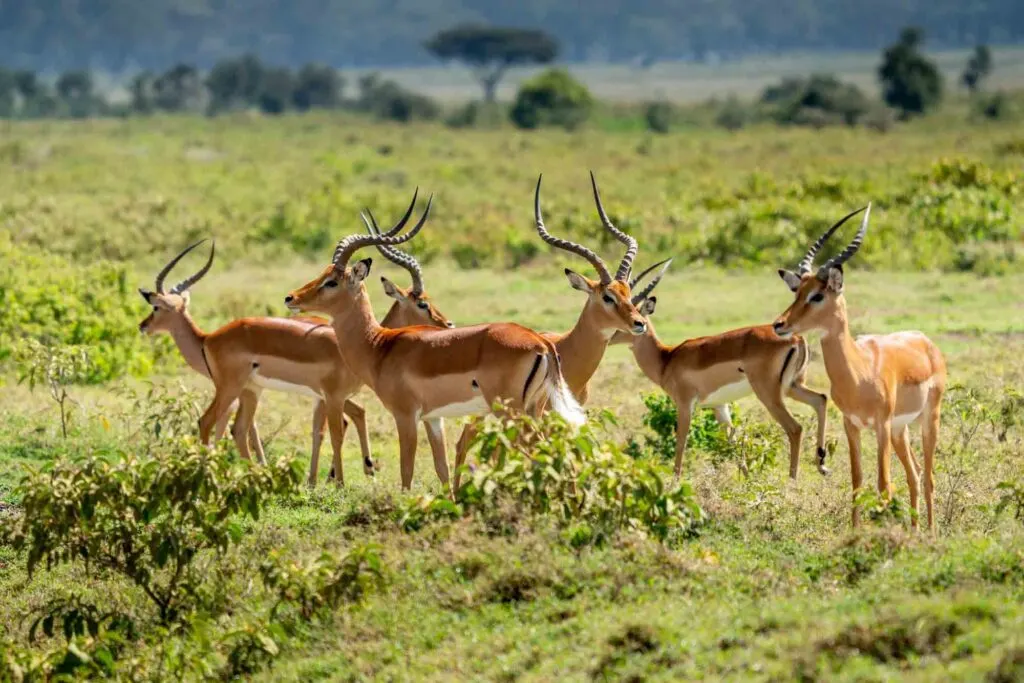
Impalas prefer shady regions with water sources, which explains why they are mainly found between savannas and woodlands.
They steer clear from tall grass areas, as that would make them more vulnerable to predators.
The habitat impalas prefer is mainly found in Africa, Kenya, Namibia, Rwanda, Angola, and Uganda. The population of impalas is high in particular regions of these countries.
Distribution
- Continents: Africa
- Countries: Angola; Botswana; Eswatini; Kenya; Malawi; Mozambique; Namibia; Rwanda; South Africa; Tanzania; Uganda; Zambia; Zimbabwe.
Habitats
Savanna | Shrubland | Grassland
Impala Behavior and Lifestyle
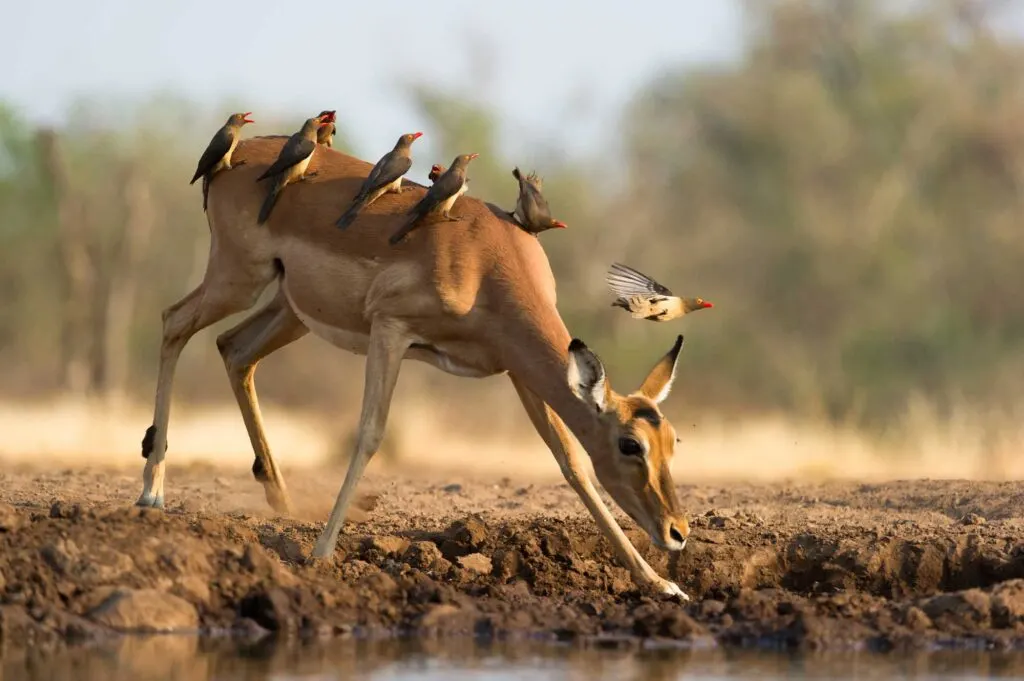
Impalas are both nocturnal and diurnal, which means their highest activity is right after sunrise and just before sunset. All they do for the rest of the hours are relax and ruminate.
They are very social and move around with the herd. The female herd usually contains 15 to 100 impalas, and one herd occupies territories spanning 100 to 180 hectares.
However, impalas are sedentary; adult and middle-aged males, in particular, can hold their territories for years.
During dry weather, the male and female herds mingle with each other. However, during the rainy season, the female herds become highly territorial and protective of the home ranges of their herds.
On the other hand, the young male impalas form bachelor herds of up to 30 individuals per herd.
Impalas are symbiotically related to oxpeckers, as seen in the photo above, which feed on ticks from those parts of the antelope’s body which the animal cannot access by itself.
Impala Diet
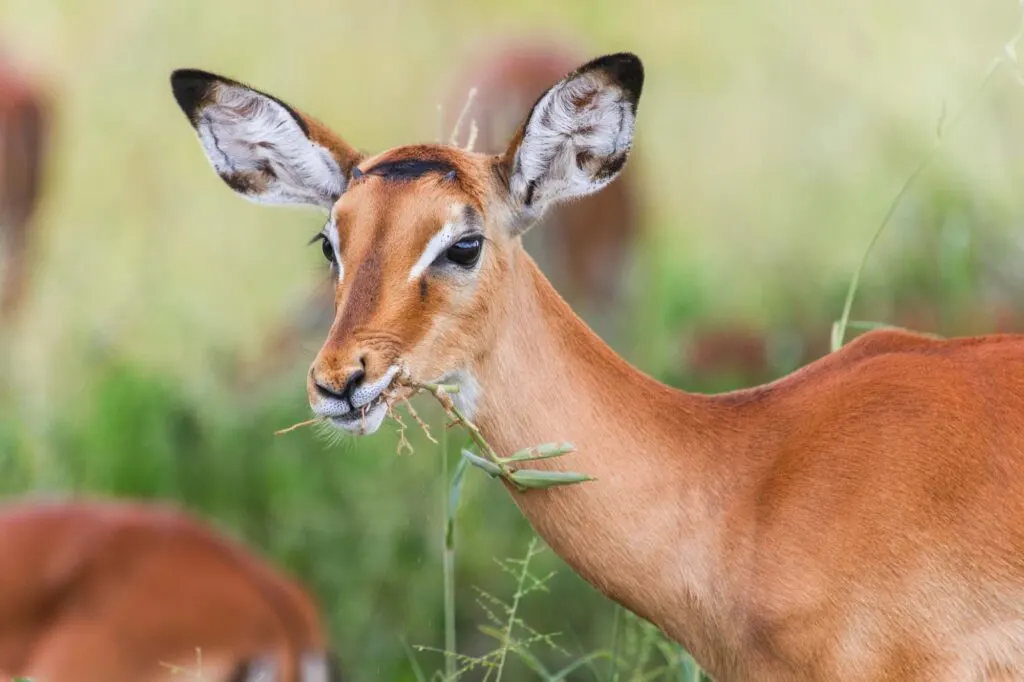
Impalas are herbivores and thrive on a variety of plants, depending on the availability of resources in the regions they live in. They primarily consume fruits, acacia pods, monocots, and dicots in areas with ample water.
The impalas switch to succulent vegetation if water is scarce in their territories. While impalas typically prefer more dicots, it is interesting that the dicot proportion is higher in the diets of females and bachelor impalas than the territorial males.
Impalas love a variety of grasses and include different types of soft and nutritious grasses. These antelopes aren’t fond of tall, tough grasses.
They are vigilant as they graze, and the herd members feeding towards the periphery are more alert than those in the center. In wet seasons, impalas prefer fresh, lush grass patches, whereas they switch to shrubs in the dry seasons.
Different regions in the African continent (where impalas are found the most) have vast grasslands and woodland borders. Also, the savanna regions in Africa are apt for impalas to graze and browse.
The four-chambered stomachs of impalas make it easy for them to ruminate. This ensures they get maximum nutrition from all the greens they consume. This, in turn, is converted into muscle, fat, and energy.
As carnivores prey on impalas, they get their share of nutrition from impalas too.
Impala Reproduction and Mating
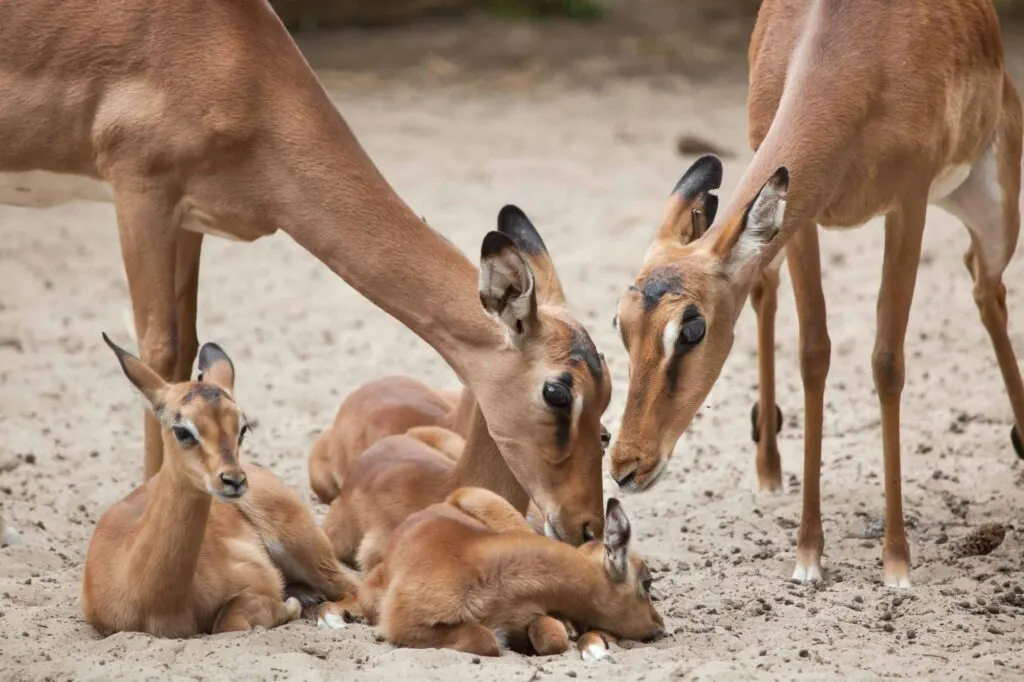
Impalas follow a polygynous mating system, which means every male mates with numerous females. The breeding season of impalas spans from March to May, toward the end of the wet season.
During this period, the breeding activity is at its peak. The gestation period of impalas is 194 to 200 days, during which the pregnant females totally isolate themselves.
Once the females give birth to the calf (weighing around 11 pounds), it is immediately concealed in cover for the first few weeks of the delivery. Later, they both (the mother impala and the calf) join the herd back again.
The calves are weaned at 4 to 5 months of age, during which they join fellow impala calves. Even though impala males are sexually mature by the age of one, they start mating only at the age of four.
The adult males then move to establish their own territories to access the females.
Impala Conservation Status
Least concern[1]
Impala Predators and Threats
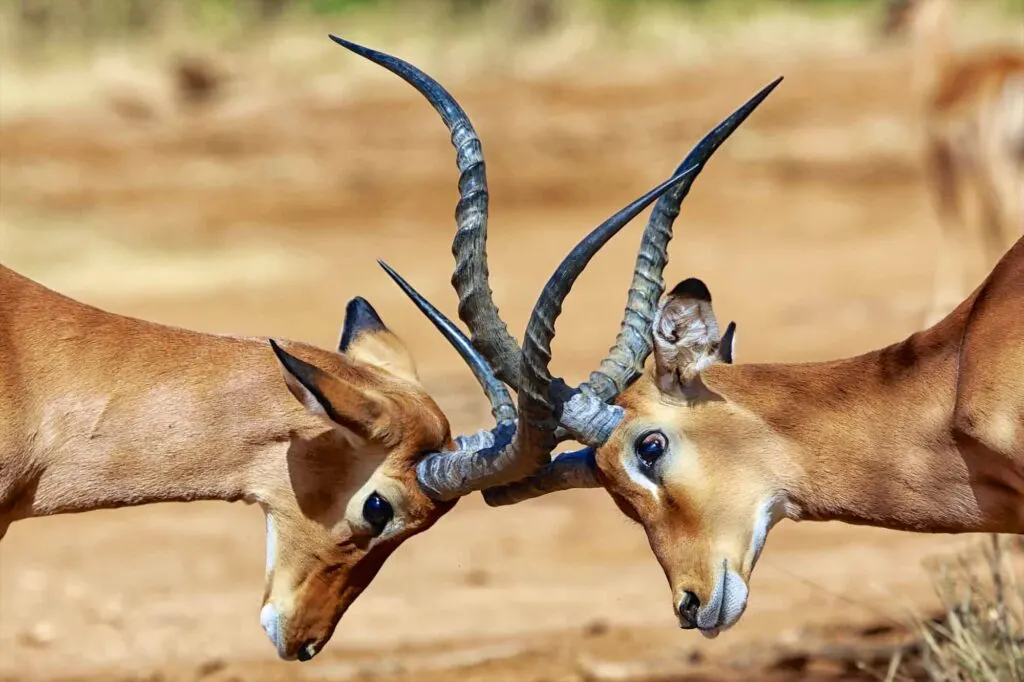
Primary predators of impalas include carnivorous animals such as lions, cheetahs, leopards, hyenas, and wild dogs.
Apart from these, they are also the food of jackals and eagles. Humans and hunting dogs, too, are predators of these antelopes.
Apart from this, the impalas are currently threatened due to human intervention in their natural habitat. Roads passing through their habitats negatively affect all aspects of their lives, making it difficult for these antelopes to feed, move, mate, and give birth.
South African people consume impala meat, making them more susceptible to hunting. Currently, the total number of impalas is estimated to be around 2,000,000.
Impala Facts
Here are some fun facts about impalas:
- To ensure the entire birth process goes smoothly without any fear of predators, impala females give birth to their calves in the afternoons. This is the time when their predators rest.
- When in threat, the impalas give out barking calls to alert the rest of the herd members. They also can recognize other animals’ warning calls.
- If a territorial male impala loses a fight to another, he must surrender the herd and move back to join the bachelor impala herd.
- Impalas cut down on the risk of being hunted down when they live in herds. This is because, at the sight of a predator, the entire herd scatters, running in different directions. This confuses the predator.
